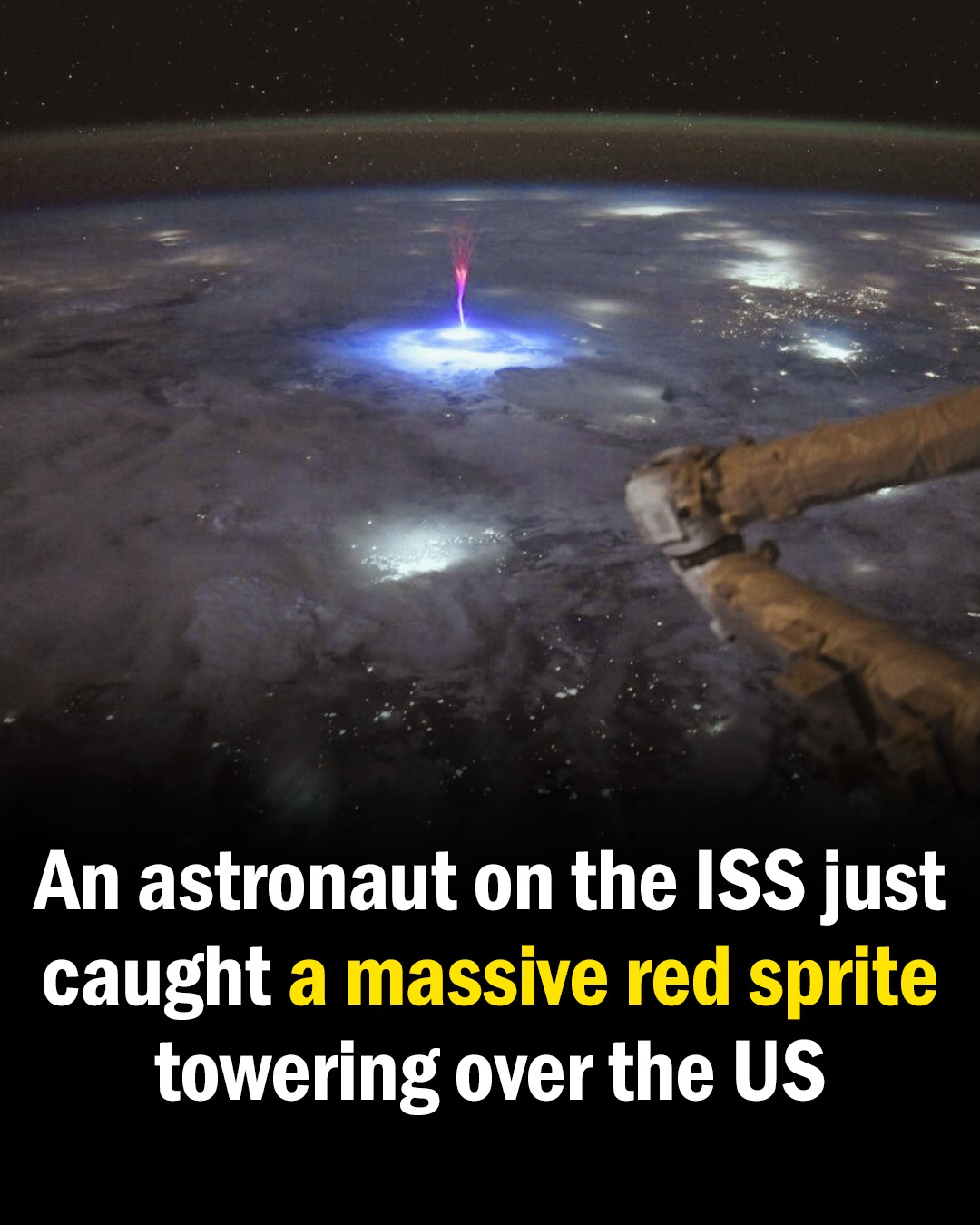Imagine soaring high above Earth, looking down at the swirling chaos of a thunderstorm—when suddenly, a massive, glowing red jellyfish appears in the sky.
That’s exactly what happened aboard the International Space Station earlier this week, when NASA astronaut Nichole Ayers captured a breathtaking photograph of a rare lightning phenomenon known as a sprite. The image, which she shared on social media, has since gone viral—and for good reason.
“Just. Wow,” Ayers wrote in her caption. “As we went over Mexico and the U.S. this morning, I caught this sprite.”
What Exactly Is a Sprite?
Sprites are not your typical lightning bolts. These Transient Luminous Events (TLEs) are large-scale electrical discharges that occur high above thunderstorm clouds, often resembling jellyfish or carrots. Unlike the familiar zig-zag lightning we see during storms, sprites shoot upward, sometimes reaching up to 50 miles (80 kilometers) into the mesosphere.
Their bright red glow comes from excited nitrogen molecules in the upper atmosphere. And while they look like something out of science fiction, sprites are a very real—and very rare—phenomenon.
A View Only Space Can Offer
Sprites are notoriously difficult to capture from the ground. They flash into existence for only a few milliseconds and often occur above large storm systems, far from city lights or observation points.
That’s why the International Space Station offers such a unique advantage. Orbiting roughly 250 miles above Earth, astronauts aboard the ISS have a clear, wide-angle view of atmospheric activity. Ayers’ photo was taken while the station was passing over a massive thunderstorm stretching from Mexico into the southern United States, including parts of California and Texas.
The image shows the sprite emerging like a ghostly red mushroom above the clouds—a rare treat for both scientists and skywatchers.
Why Sprites Matter
While they might look like a cosmic light show, sprites actually offer valuable insight into Earth’s atmospheric dynamics. These flashes are triggered by strong positive cloud-to-ground lightning strikes, which cause massive electric fields to form in the upper atmosphere.
By studying sprites, researchers can learn more about:
-
The behavior of lightning in powerful storms
-
The electrical interactions between different layers of the atmosphere
-
How energy is transferred during extreme weather events
Sprites are also considered “cold plasma” discharges, meaning they don’t generate much heat like traditional lightning, which adds another layer of mystery to their nature.
A History of Celestial Curiosity
Although sprites were first eyewitnessed in the 1950s, scientists didn’t manage to photograph them until 1989. Since then, research has grown steadily, but sightings remain rare—especially from space.
That makes every capture, like the one by Nichole Ayers, not just beautiful, but scientifically significant.
Final Thoughts
In an era where we can livestream Mars rovers and monitor deep-space signals, it’s easy to forget just how mysterious our own planet can be. This otherworldly jellyfish-shaped flash, dancing silently above a North American thunderstorm, reminds us that Earth still holds many secrets—some of them hidden in plain sight, waiting for the perfect view from space.
So the next time you look up at a stormy sky, remember: something extraordinary might be happening just above the clouds.

